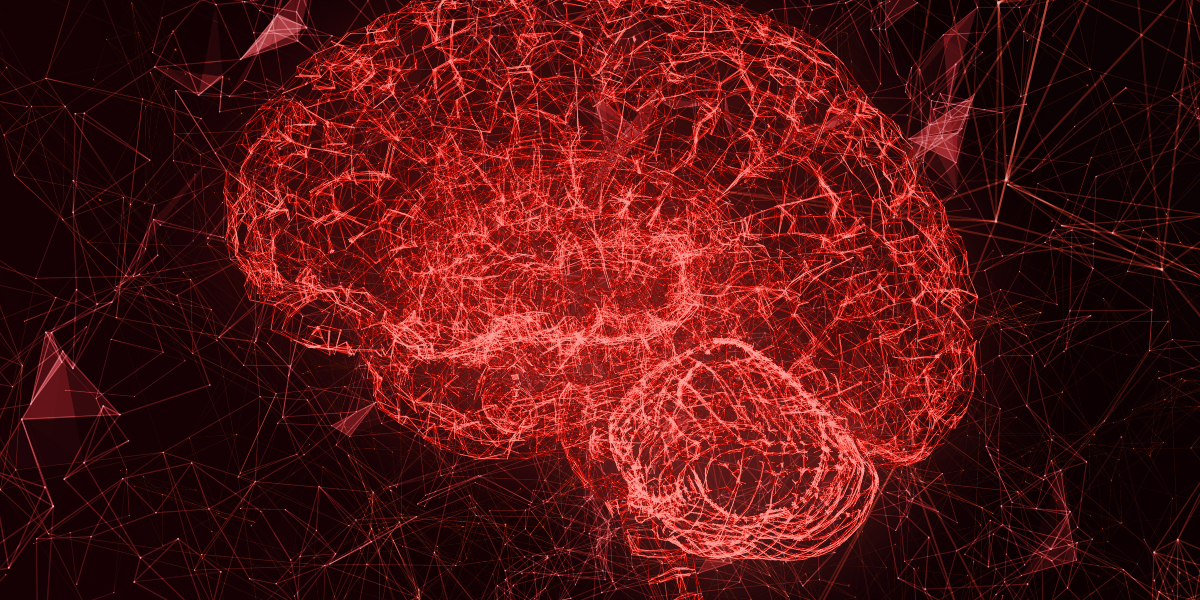Transcranial PBMT: The Impact of Photobiomodulation on the Brain
We’ve talked a lot about how photobiomodulation can impact different parts of the body. Did you know that PBMT is being used on the brain? While still largely experimental, PBMT with lasers and LEDs is being tested for their effects on the brain to help heal from physical trauma as well as its impact on depression and neurodegenerative diseases like Alzheimer’s.
Mechanism of Transcranial PBMT
Red and near-infrared light is known to stimulate the mitochondrial electron transfer chain (ETC), specifically affecting the enzyme, cytochrome c oxidase, which is the last enzyme in the respiratory ETC. PBMT with red and near-infrared (NIR) light has been shown to have anti-inflammatory effects all over the body and increased circulation and metabolic activity.
When applied to the brain, PBMT’s effect on the ECT has been shown to enhance metabolic capacity of neurons (oxygenation) and stimulate anti-inflammatory, anti-apoptotic (programmed cellular death), and antioxidant responses.
Challenges of Transcranial PBMT
The major challenge with using PBMT on the brain is getting enough light to penetrate through the skull. There’s three factors that impact light absorption by tissue that are used to set unique protocols for each patient for a customized and targeted approach:
- Fluence: Fluence refers to the intensity of the light. PBMT generally has low fluence compared to other kinds of light devices, but it can be adjusted to achieve greater saturation to reach deeper in the body. Continuous wave (CW) uses a lower intensity of light for a longer application time while pulsed wave (PW) uses a higher intensity light for a short period of time.
- Wavelength: One or multiple wavelengths may be used to achieve effective light saturation through muscle, tissue, and bone. Some common wavelengths in PBMT are 633nm, 810nm, 850nm, and 940nm. Generally, longer wavelengths have the ability to reach further into the body before they’re completely absorbed, but shorter wavelengths are still highly beneficial for treating the skin and directly below the skin.
- Frequency: PBMT, like many therapies, requires multiple applications over a period of time. For example, appointments may be sessions of 10-20 minutes, with a maximum of four times per week, over several weeks to achieve the greatest and most long-lasting outcomes.
All three of these will vary depending on the patient and their health history as well as the concern they’re addressing with PBMT. A device that can be uniquely programmed for each patient offers the greatest range of treatment possibilities.
Applications of Transcranial PBMT
While still experimental, transcranial photobiomodulation therapy has been studied for its effects on a wide variety of neurological and psychological concerns:
- Alzheimer’s and dementia
- Parkinson’s disease
- Traumatic brain injuries (TBI), both in short- and long-term
- Depression
- Maintaining healthy brain function
Alzheimer’s & Dementia
These progressive neurodegenerative diseases affect many aging adults and their loved ones. Near-infrared PBMT has been tested in a handful of clinical studies involving humans which show promise for its efficacy as a treatment. Patients in the studies showed significant improvements in their sleep quality, mood, and had improved cognitive function, memory, and attention.
Parkinson’s Disease
Parkinson’s disease pathogenesis is linked to abnormalities in the SNc, which is a midbrain structure. Since the target area for PBMT is deeper in the brain than for other applications, it may be difficult to achieve a dosage that will effectively penetrate light to the proper area. However, the only study of PBMT on human patients with Parkinson’s disease found improved motor and cognitive functions following two weeks of transcranial PBMT. More studies are needed to confirm the effects.
Traumatic Brain Injury (TBI)
Traumatic brain injuries are caused by a sudden impact or shaking of the brain around inside the skull, and they’re common in high-contact sports, such as football, lacrosse, and cheerleading, as well as motor vehicle accidents. Military personnel and individuals with a fall risk are also at a higher risk for these types of injuries. And individuals who’ve sustained one TBI are often at a higher risk for a second. These types of injuries can cause lasting pain and impact cognitive function.
Transcranial PBMT has been studied for its effects immediately following a TBI and as a therapy for lasting symptoms, like headaches, disturbed sleep, depression, poor memory, and poor concentration. PBMT shows the greatest promise as a therapy for chronic TBI symptoms. Clinical studies with TBI patients showed the LED therapy helped patients with improved self-awareness, self-regulation in social function, and sleep quality. NIR laser therapy has been used on TBI patients as well, and studies showed reduction in headache frequency, improved sleep quality, and improved cognitive and mood states.
Depression
Major depressive disorder (MDD), also called clinical depression, affects around three million people in the United States every year. While there are a variety of treatments available, many individuals may spend months or years finding a treatment plan that’s effective for them. Additionally, many of the medications available can react adversely and make depression symptoms worse, further impairing a person and impacting their daily life. PBMT has been studied for its effects on symptoms of MDD and TBI patients with comorbid depression.
LED PBMT showed alleviation of depression and anxiety symptoms following one treatment at a two-week follow-up. Laser therapy provided longer-lasting results of six to eight weeks, and one study found PBMT more effective when the right forehead is irradiated over the left.
Healthy Cognitive Function
Transcranial PBMT has also shown promise in maintaining cognitive function and brain activity in healthy individuals. Many of us will experience some cognitive decline as we age, and PBMT can be used to help keep us sharp. One study found enhanced higher-order cortical functions like prefrontal rule-based learning, sustained attention, and short-term memory in young, healthy subjects. The same group found in another study that PBMT improved cerebral oxygenation and brain hemodynamic processes that are necessary for higher-level cognitive functioning.
Photobiomodulation therapy has an impact on nearly every part of the body. TheraLight’s photobiomodulation LED light beds give your clinic the ability to apply healing red and infrared light to the entire body. Learn more about our full body photobiomodulation solutions in the link below.







